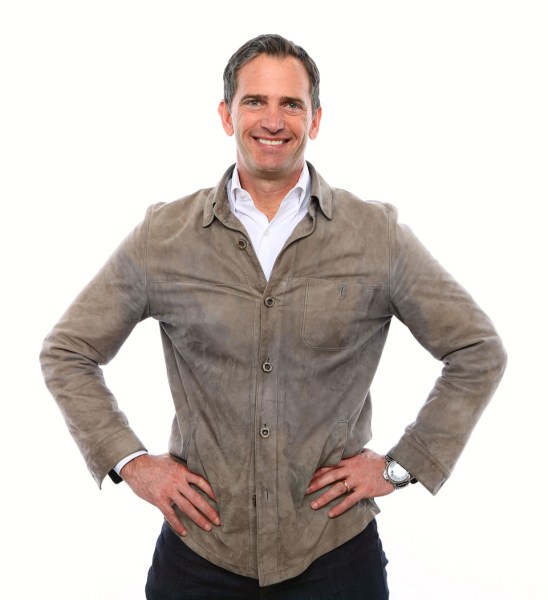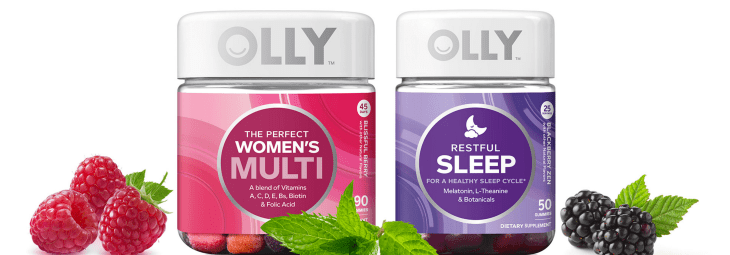Vitamins and venture capital might not seem like the most natural fit, but a number of related companies have attracted capital from tech investors in recent years, including SmartyPants, which makes a gummy vitamin, and Elysium Health, a supplements company that counts a former venture capitalist as a co-founder.
Still, competitors may have trouble catching up to two-year-old Olly, a 30-person company whose sweet vitamins, delivered in gummy form and packed in playful, eye-catching containers, are flying off a growing number of shelves. Indeed, the profitable startup, which began as an online subscription service, now derives just 3 percent of its revenue from online sales, with the rest coming from retail stores Target, CVS and GNC. (Safeway, Kroger and Albertsons will feature Olly vitamins before the end of the year, too.)
To understand how Olly vitamins have managed to become so ubiquitous so quickly, we caught up with CEO Brad Harrington, who co-founded Olly with Eric Ryan, a co-founder of the cleaning-products company Method (acquired in late 2012). For anyone interested in creating a new brand, it’s worth a read.
TC: The supplements market is an $82 billion market globally, says McKinsey. But it’s also crowded. What was the insight that made you and Eric think there was still room to compete?
BH: Eric was interested in the category from a merchant perspective. He has spent a lot of time in mass merchants like Target, looking at different categories that might be ripe for disruption, and you could walk down aisles and be like, “Well, that’s obvious.” There aren’t a lot of brands, and most products are ingredient driven, so you didn’t know what to choose.
In fact, I was with Eric in Boulder, and we were standing in an aisle of a store, and strangers would just come up to us and ask how many milligrams of zinc they should take, and we were just as dumbfounded as they were. So we thought, let’s simplify this and make everything about the end benefit versus the individual ingredients.
TC: And did you decide on gummy form right away?
BH: Actually, I gag on pills, and here I was working on this company where the whole form of nutrition was larger pills. And it got to the point where it became difficult for me to take my own product. Meanwhile, we wanted to develop something that people would want to [ingest] every day.
Things came together as we were going through development, and we launched 20 different products last year, including 16 that were in gummy form and four others that were swallowable soft gels. And when the numbers started to come in, we watched the soft gels fall to the bottom, so now we [produce only] gummies.
 TC: You started as a subscription business, but you don’t recommend it, seemingly. Why?
TC: You started as a subscription business, but you don’t recommend it, seemingly. Why?
BH: It’s hard to scale. You have to factor in your acquisition cost for a new customer and how long you keep the new customer, and it tends to be that acquisition prices are extremely high right now given the online ad world. So you’ve got to be able to withstand [those costs] while you’re building a brand. After it’s built, it’s easier. But it requires longevity.
TC: In the meantime, you’ve managed to figure out retail. Any lessons there?
BH: We first launched in Target, which was an exclusive for a year. Doing channel exclusives has been our strategy. Right now, we’re doing a specialty [store] exclusive with GNC, for example, and what’s really cool about GNC is you have these storefronts with windows and passersby, so it’s been great from a branding standpoint. We also have an exclusive with CVS, which is our current drug [store] channel.
GNC and CVS came to us, which is exciting. But we’re basically trying to control our growth, to ensure that we’re hiring the right kind of people and not expending our funds too quickly.
TC: Speaking of funding, how much have you raised, and will you be back in the market any time soon?
BH: We’ve raised $11.5 million from Obvious Ventures, Base Ventures, [Yahoo’s first CEO] Tim Koogle, [former Peet’s coffee CEO] Pat O’Dea, and a bunch of other high-net-worth individuals. We’re trying not to raise more funding. We [landed] broad distribution right out of the gate and we were profitable in our first year and that cash flow and success continues.
TC: What’s your marketing strategy?
BH: We’re keeping everything digital and in store in 2016, but we want to turn on marketing in a big way in 2017, though we’re still trying to figure out what our awareness play is going to be. We really want to create an iconic brand that connects lifestyle and millennials.
TC: Who is designing these products, and where are they produced?
BH: They’re made in Indiana largely, and at a couple of facilities in Florida. We have a chief medical officer who was an internist at Schiff Nutrition, which makes Airborne and was acquired [in 2012 for $1.4 billion]. He sort of brings the pragmatic physician’s perspective. Our VP of Innovation is a naturopathic doctor; she brings the Eastern medicine perspective. We also have a Ph.D. in nutrition. It’s a small team but they develop our products quickly. We have 25 products and we’ll have 35 products by September.
TC: Are your customers mostly women?
BH: About 80 percent of our customers are women.
TC: How do you keep your products from cannibalizing each other? Many seem very similar.
BH: It’s an art for sure. Our women’s [berry-flavored] multivitamin berry does very well, for example. It’s our second-best selling product. What we did to [avoid impacting its sales was] developed a line centered on the phytonutrients that people are missing in their diets from vegetables and fruits. The multi makes up for a lot of those deficiencies, but it doesn’t address the phytonutrient side of things, so we produced a “super food” multi that has components of watercress and kale and papaya and that comes out at higher price. So you create a distinction between those two things, and you [see] different buyers.
TC: What’s your best-selling product?
BH: It’s our sleep product. It’s actually Target’s best-selling product in the category, too. Its base ingredient is melatonin, which puts you to sleep, and it’s blended with the amino acid L-theanine, which helps calm the brain, so the combination puts you to sleep and keeps you asleep. Everything we do is blended so that one plus two is greater than three.
TC: There’s also an awful lot of sugar in your vitamins. I happen to be a big fan of sugar, but it’s addictive, of course. Does using it make the vitamins more habit-forming?
BH: Each dose contains two grams of sugar. If we made a chewable without sugar, that probably wouldn’t be such a great experience either. We’re looking to establish good habits and if you have to put a bit of sugar to create those habits, I don’t see anything wrong with that.
